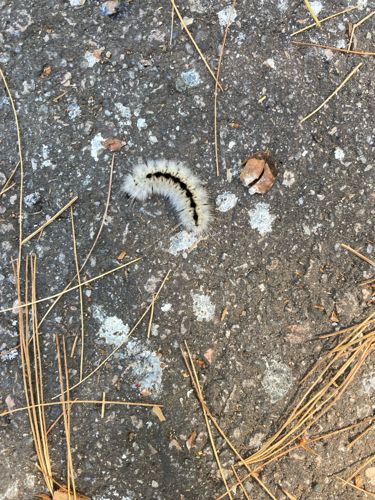Fall Webworm (caterpillar)
Scientific Name: Hyphantria cunea
Order & Family: Lepidoptera (moths and butterflies), Erebidae
Size: Larvae (caterpillars) typically grow to 1 to 1.5 inches (2.5 to 3.8 cm) in length.

Natural Habitat
Deciduous trees found in temperate regions, particularly in orchards, ornamental plantings, and woodlands.
Diet & Feeding
The caterpillars are polyphagous, feeding on the leaves of a wide variety of deciduous trees and shrubs, including mulberry, walnut, pecan, hickory, fruit trees, and many others. They skeletonize leaves, leaving only the veins.
Behavior Patterns
Fall webworms are known for constructing large, silken webs that enclose the leaves and branches where they feed. These webs expand as the caterpillars grow and consume more foliage. They are social caterpillars, feeding and living together within the web. There can be one to two generations per year depending on the climate, with the last generation appearing in late summer and fall.
Risks & Benefits
Potential Risks: While generally not fatal to mature trees, heavy infestations can cause defoliation, leading to decreased growth and aesthetic damage. The webs can be unsightly. The hairs on some caterpillars can cause mild skin irritation in sensitive individuals, though Fall Webworm hairs are not as irritant as some other species. Potential Benefits: They can be a food source for birds and other predators. As defoliators, they play a minor role in forest dynamics, though their impact is usually localized.
Identified on: 10/5/2025